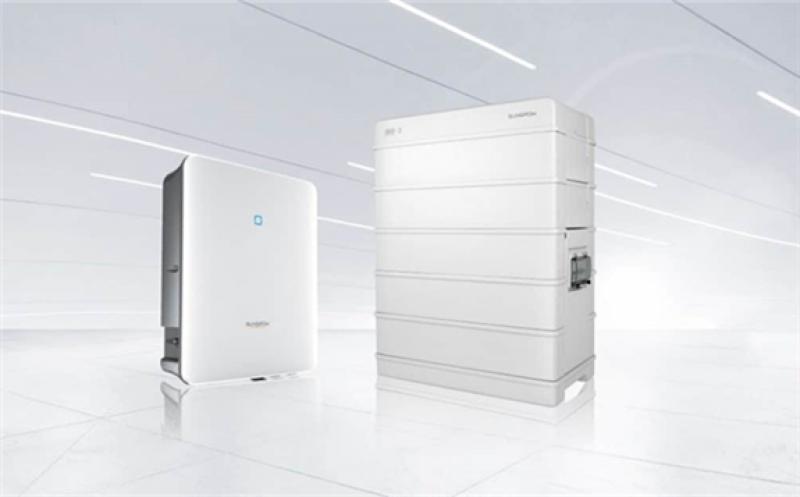Chinese power electronics company Sungrow has unveiled a new storage energy solution for rooftop applications that comprises a hybrid inverter and a high-voltage battery.
 The new hybrid inverter and battery launched by Sungrow. Image: Sungrow
The new hybrid inverter and battery launched by Sungrow. Image: Sungrow
“The hybrid inverter is initially being launched in Europe and the combination of the inverter with the battery will be launched in Australia,” a company spokesperson told pv magazine.
The high-voltage SBR lithium iron phosphate battery uses LiFePO4 as the cathode material and has a storage capacity between 9.6 kWh and 102.4 kWh, depending on the number of modules.
A three-module device has a capacity of 9.6 kWh, a nominal voltage of 192 V, and DC power of 5.76 kW. Its short circuit current is 1,700 A and the continuous maximum charge-discharge current is 30 A. It measures 625x545x330mm, weighs 114kg, and features a 10-year performance guarantee. The battery uses natural convection as a cooling system.
The hybrid three-phase inverter, called SH5.0/6.0/8.0/10RT, is available in five versions, with nominal AC power output ranging from 5 kW to 10 kW. Depending on this value, the device's efficiency spans from 98% andto 98.4%, and the European efficiency from 97.2% to 97.9%.
The product comes with two maximum power point tracking (MPPT) inputs while its MPPT voltage range is 150-950 V. Its maximum input current (DC) is 25 A and the maximum short circuit current ranges from 32 A to 48 A. It is equipped with IP65 protection, natural convection air cooling, and can be used in projects at altitudes of up to 4,000m, and in temperatures ranging from -25 degrees Celsius to 60 degrees Celsius. It is compatible with lithium-ion batteries and a battery voltage of 150-600 V.
Referring to the Australian rooftop PV market, Sungrow said that the proposed solution can help optimize self-consumption by storing excessive energy in the battery and perform as backup power, offering continuous power supply in case of a grid outage. “Besides, charging from the grid during off-peak and discharging at peak can be profitable. With an increasing number of residential systems connect[ed] to virtual power plant (VPP) networks, the solutions are compatible with multiple devices, benefiting the users from VPP business models immediately,” the manufacturer explained.